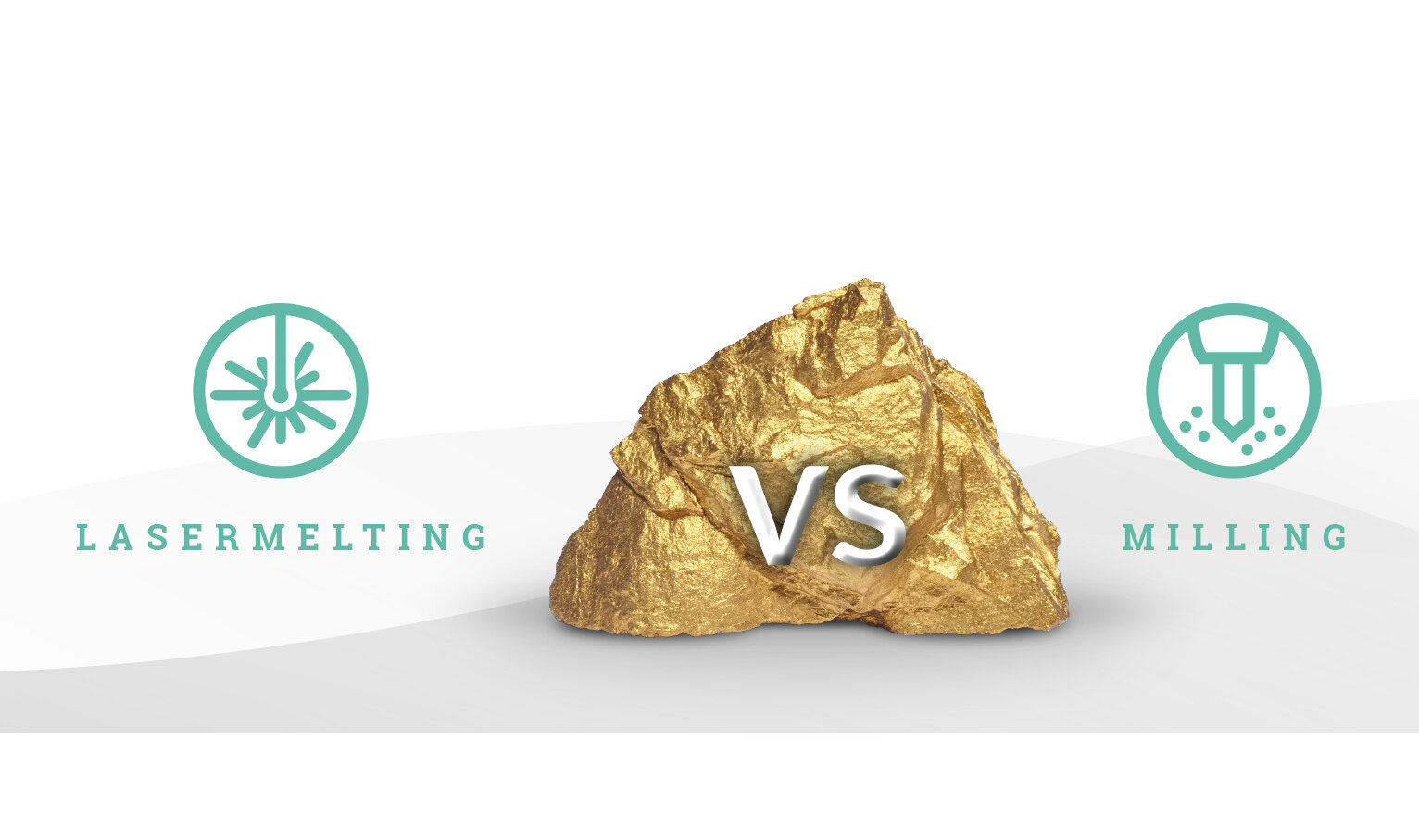CADdent battle ring free for: lasering gold or milling gold?
Some time ago we sent the two manufacturing processes milling technology and LaserMelting to the CADdent Ring. Today we are picking up the topic again, but highlighting it specifically for the production of gold frameworks.
Use of materials
In the subtractive manufacturing milling technique the frames are machined subtractively from a milling blank. Due to this processing method, there is a considerable use of material. Despite the space-optimized positioning of the dental framework/design, it remains a large proportion of the residual material from the blank. This then has to be melted down again in later work steps.
Not considering that there is a large amount of capital in circulation. The method also has other significant disadvantages due to the subtractive processing. For example, the resulting milling chip has to be removed from the machine with great effort. Due to the nature of the machine, there are losses within the system and during handling.
In additive manufacturing technology, like LaserMelting, the structures are built up layer by layer. Material is only used where it is needed. In contrast to the milling technique, the excess gold powder is returned to the machine's work cycle. In addition, the design can be reduced in weight by virtual scratching out by our CADdent experts. Depending on the design, between 10 and 40% of the material can be saved in this way.
The point for the use of material thus clearly goes to lasering gold.
Surface finishing
Milled gold frameworks are given a particularly beautiful and smooth surface thanks to the fine finish of the milling machine, which makes manual post-processing much easier.
As you know it from LaserMelting frameworks, due to the production process, these have a rougher surface, especially at the points that are connected to the building board by the support structure. This leads to a visual appearance of the framework that is unusual for dental technicians and to a higher effort in post-processing.
In terms of surface quality, milled gold frameworks have the edge.
Variety of materials
Various precious metal alloys are available for the subtractive manufacture of dental gold frameworks. On the other hand additive manufacturing has so far only worked with the dental alloy CADgold 84 (Herador S).
Although our research and development department is working on the use of various dental gold alloys, for the moment this point also goes to the milling technique.
Freedom of geometry
There are many geometry limitations in milling technology. High Spee’s curves cannot be milled due to the height of the milling blanks. Particular attention must also be paid to avoiding undercuts in the design.
With the LaserMelting process, on the other hand, any geometry can be implemented as long as the indications for edge and wall thickness are observed.
Due to the absolute freedom of geometry, this point clearly goes to LaserMelting Gold.
CONCLUSION
Both methods have their advantages and disadvantages. It is up to you and your preferences which advantages or disadvantages you give more weight to.
However, one thing should be noted: compared to the conventional casting technique, both the subtractive and the additive manufacturing of gold frameworks have advantages.
Digital modeling achieves a significantly higher level of detail and thus greater accuracy than manual wax modeling. In contrast to the casting, both milled and lasered gold frameworks are 100% tension-free. By sending your design data to a manufacturing center for production, you also save time and can use this freed-up window for more value-added tasks, such as ceramic veneering of frameworks. Last but not least: the expensive pre-financing and the high storage costs when storing precious metals are no longer necessary for your laboratory, because your production center takes care of them for you.
Do you have any questions about our material or about the CADdent Revolution LaserMelting Gold in general? Contact us! Our experts will be glad to advise you!
